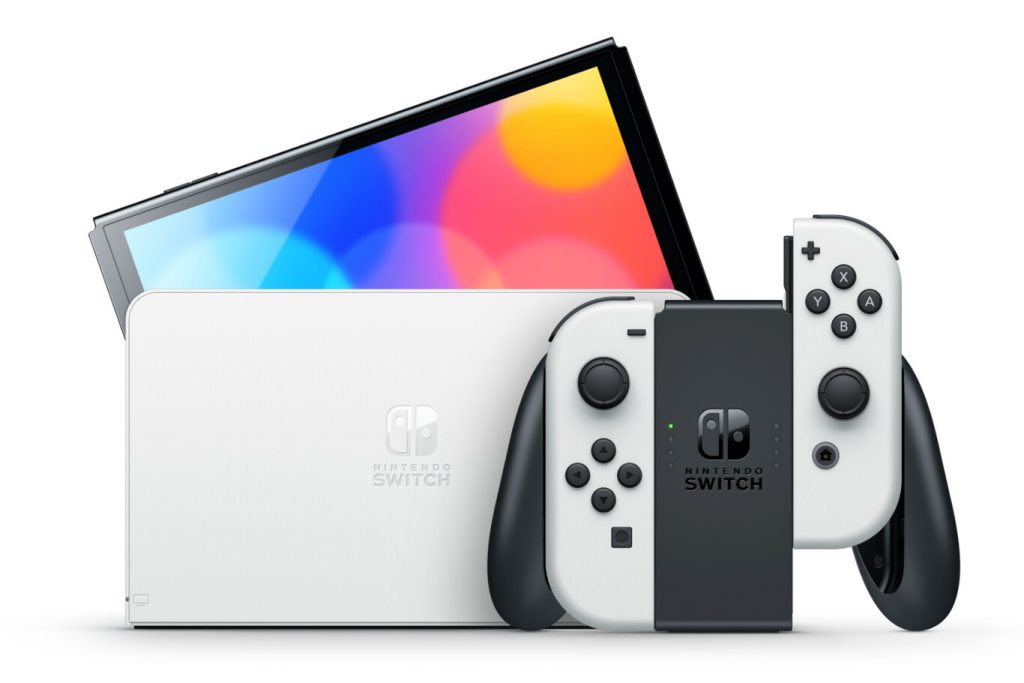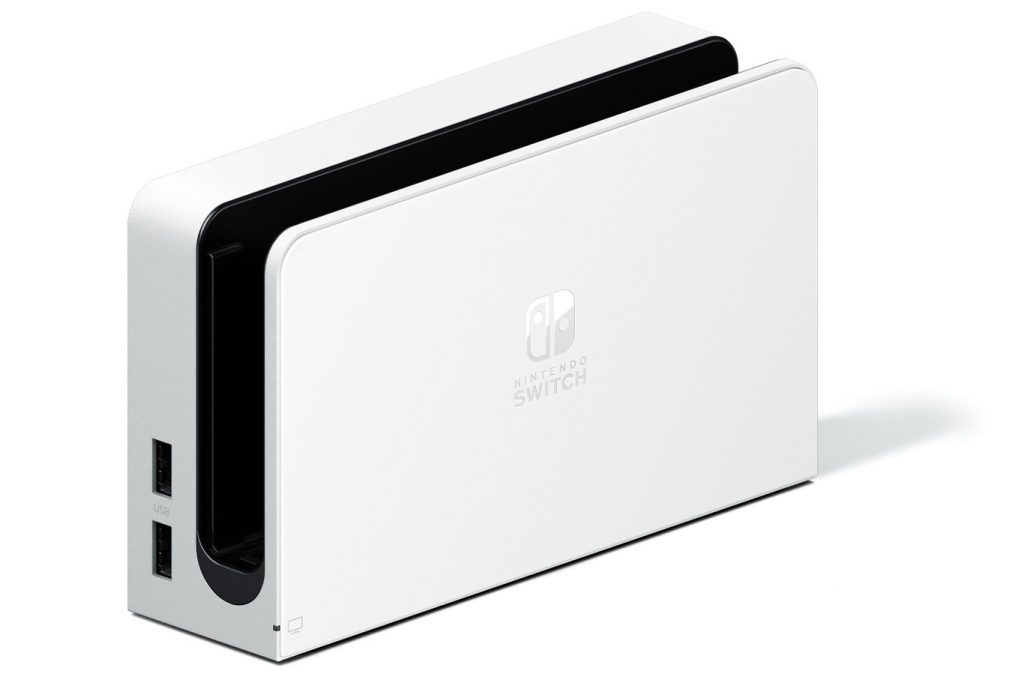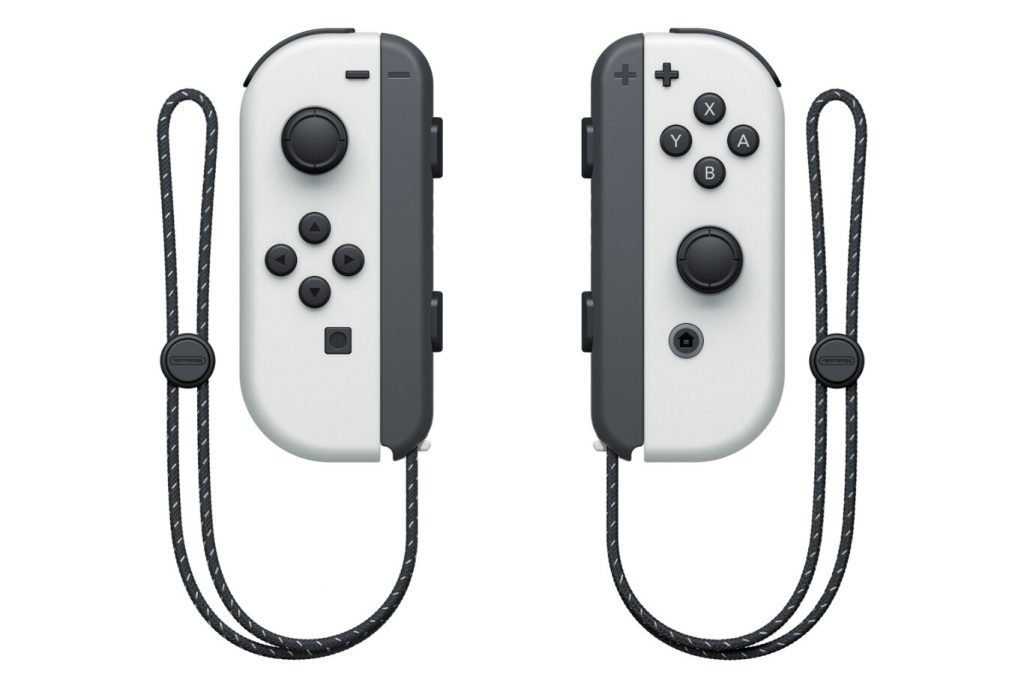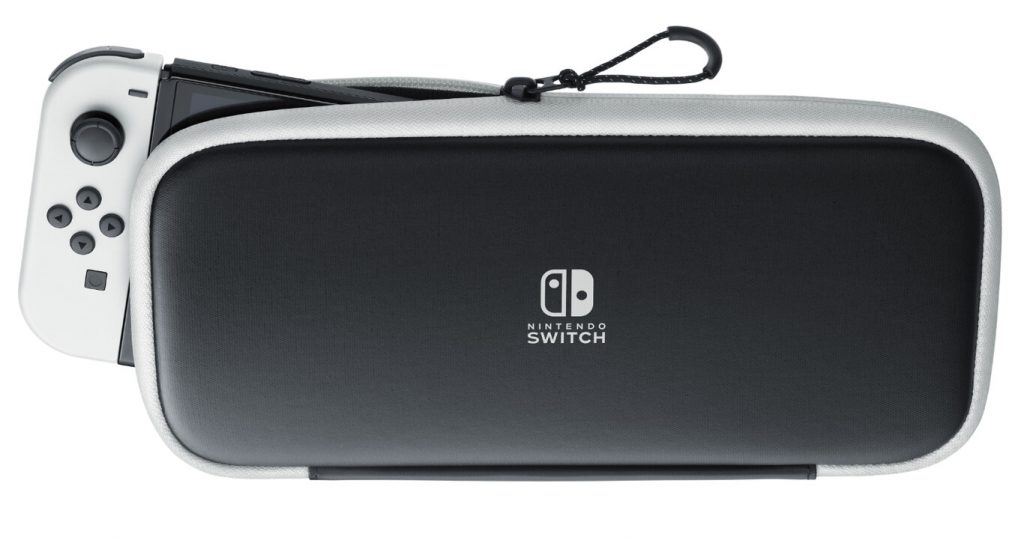Endless rumors and leaks later, Nintendo has announced its new Nintendo Switch OLED. Although it was expected that the new Nintendo console would be a “Pro” model with an OLED screen and support for 4K, the truth is that it has not been the case. The new model is decaffeinated and, simply put, it represents a relatively fair evolution.
Next we are going to review the main differences between the standard Nintendo Switch (the non-Lite) and the new Nintendo Switch (OLED), a console that simply puts on the table an OLED screen, an improved speaker, an adjustable stand and a base for TV with an Ethernet port, but little else.
Specifications of the Nintendo Switch OLED and Nintendo Switch
| NINTENDO SWITCH (OLED) | NINTENDO SWITCH | |
| DIMENSIONS AND WEIGHT | 102 x 242 x 13.9 mm320 grams without Joy-Con420 grams with Joy-Con | 102 x 239 x 13.9 mm297 grams without Joy-Con398 grams with Joy-Con |
|---|---|---|
| SCREEN | 7 inch OLEDResolución HD (1.280 x 720 píxeles) | 6.2 inch IPS / LCDHD resolution (1,280 x 720 pixels) |
| CPU / GPU | NVIDIA Tegra processor | NVIDIA Tegra processor |
| INTERNAL STORAGE | 64 GB ampliables con tarjetas microSD | 32 GB expandable with microSD cards |
| CONNECTIVITY | WiFi acBluetooth 4.1Wired LAN connection on the base (tele mode) | WiFi acBluetooth 4.1Wired LAN connection with adapter (tele mode) |
| VIDEO OUTPUT | Maximum resolution: 1,920 x 1,080 px, 60 FPS | Maximum resolution: 1,920 x 1,080 px, 60 FPS |
| AUDIO OUTPUT | Linear PCM 5.1 compliantStereo speakers | Linear PCM 5.1 compliantStereo speakers |
| SENSORES | AccelerometerGyroscopeBrightness sensor | AccelerometerGyroscopeBrightness sensor |
| PORTS | USB type CMicroSD slotNintendo Switch cartridge slot3.5 mm jack | USB type CMicroSD slotNintendo Switch cartridge slot3.5 mm jack |
| DRUMS | 4,310 mAh4,5-9 horasCharging time: 3 hours | 4,310 mAh4.5-9 hoursCharging time: 3 hours |
| OTHERS | Adjustable standBase with LAN portIntegrated SpeakersCompatible with Switch’s Joy-Con | Fixed bracketBase with LAN portIntegrated Speakers |
| PRICE | 349.99 dollars | 319 dollars |
The main differences

The Nintendo Switch (OLED) is a Nintendo Switch with a bigger screen and a couple of improvements, but for all practical purposes it is the same console. So much so that the Nintendo Switch (OLED) is compatible with the standard version Joy-Con and its games. Come on, if you have Switch games you can use them on the Switch (OLED).
The new model is slightly heavier, weighing 420 grams with the Joy-Con on versus 398 grams for the base Switch. The company has implemented an OLED screen, something that was expected, and has increased its size to seven inches. However, the resolution remains the same: HD (1,280 x 720 pixels).Despite having a larger screen size, the resolution is still HD.
The advantages of OLED technology are, basically, that they offer more vivid colors, purer blacks and much better contrast than conventional IPS panels. However, they also have their disadvantages, such as the possible appearance of long-term burned areas. That’s because OLED panels use organic compounds that are more prone to image degradation and retention.
On the other hand, an interesting improvement is the implementation of an adjustable stand. This was one of the big complaints from users (and whoever writes this subscribes as a Switch user), and that is that the Nintendo Switch in desktop mode can only be placed in one position. The Nintendo Switch (OLED), however, can be placed in different positions, which should make it more comfortable to play local multiplayer, for example.
Another change is found in the speakers, another frequent complaint from users. The Switch (OLED) still retains the stereo speakers, but now Nintendo claims to have optimized the audio to be of better quality when we play in desktop and portable mode. We will have to wait until October 8 to see how they behave.
The penultimate major change is in the base for gaming on television: it now has a built-in Ethernet port for online gaming. The previous model was also compatible, but through an optional accessory that had to be purchased separately. Now the Ethernet port is integrated into the base and should in principle offer a more stable online gaming experience.

Finally, it’s time to talk about internal storage. If the Nintendo Switch mounted 32 GB of internal storage of which 6.2 GB were reserved for the operating system, the Nintendo Switch (OLED) goes up to 64 GB . It is double and surely it is a welcome change for those who like to have several games installed on the console.
Evolution falls short
But that’s it. Beyond the change in screen technology and size, the adjustable stand, double the internal storage and the base with Ethernet, the Nintendo Switch (OLED) is still a slightly vitaminized Nintendo Switch. A subtle evolution that fits with Nintendo’s strategy, but falls short of power.
On the one hand, the seven-inch OLED screen retains the HD resolution (1,280 x 720 pixels), so the density of pixels per inch of the new Nintendo console will be lower. That should affect the image quality, which should be slightly lower on the new console.

On the other hand, the new technology and the new size are not accompanied by an improvement in power . Both the Nintendo Switch and the Nintendo Switch (OLED) mount an NVIDIA Tegra processor from 2015, a processor that is used for current games but we will have to see how it behaves before the arrival of titles such as ‘ Pokémon Legends: Arceus ‘, the world open Pokémon that aims to be quite demanding. It has also been confirmed that the CPU has not been modified or more RAM has been added.
Basically, the Nintendo Switch is, on paper, just as powerful as the previous generation, which explains why it does not have 4K video output, something that was also expected. It may not be the last console we see this year (rumors pointed to a presentation in September), but it would be strange if Nintendo released new hardware this year. However, in February they said there would be no more models soon and here we are, talking about the Switch (OLED).

There are also no improvements in autonomy. The official figures are between 4.5 and 9 hours of autonomy, with 5.5 hours playing ‘The Legend of Zelda: Breath of the Wild’. It is the same figure as the original console. The charging speed has not been improved either, which is still three hours.
Most interesting of all, it doesn’t matter because Nintendo has never wanted to enter the console war. Nintendo knows that its console works and that its first-party games work. For Nintendo it is not a question of better hardware, but of making games for its hardware, and that strategy has always worked for it: 84.59 million consoles sold support it.